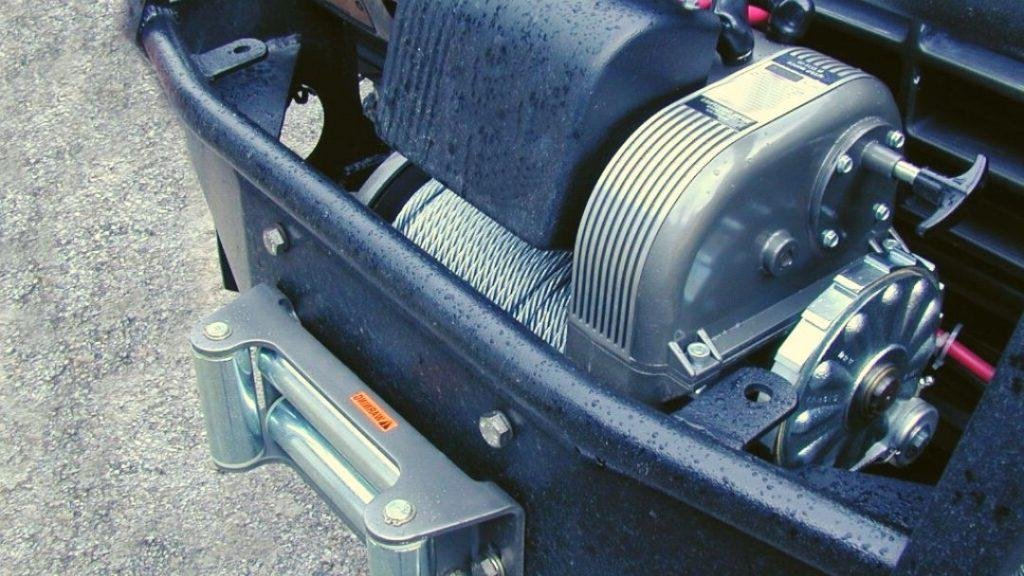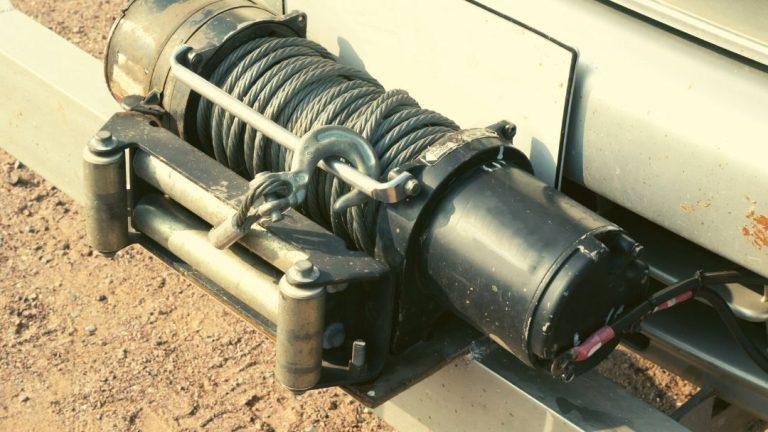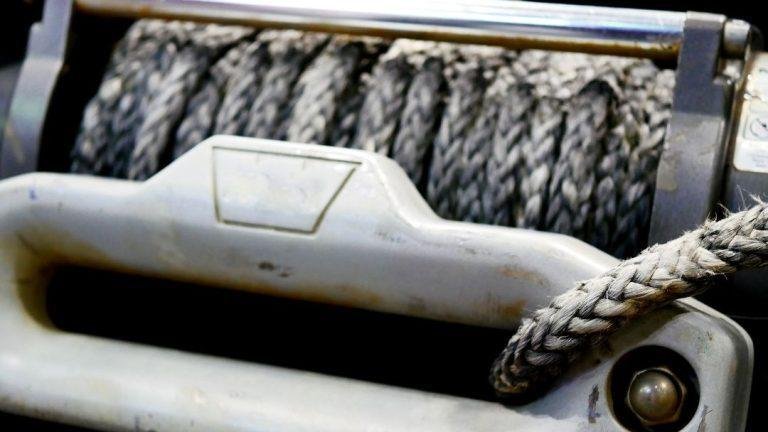You need a winch with a weight capacity that is equal to or greater than the weight you intend to lift or pull. The winch capacity should be determined by the maximum weight of the load you plan to handle.
Introducing the correct weight capacity for a winch is essential for safely and effectively lifting or pulling heavy loads. Whether you’re looking to use a winch for recreational purposes, such as off-roading or towing, or for industrial applications like construction or hauling, choosing the right weight capacity is crucial.
The weight capacity of a winch refers to the maximum load it can handle without compromising its performance or safety. By selecting a winch with a capacity equal to or higher than the weight you plan to lift or pull, you can ensure that your winch can handle the load with ease.
Factors To Consider When Selecting A Winch
Choosing the right winch depends on factors like the weight of the load and the terrain. Assessing the weight capacity needed and considering the conditions you will be using the winch in will help in finding the right winch for your needs.
When it comes to selecting the right winch for your needs, several factors should be taken into consideration. Below, we will explore the key considerations that will help you determine the appropriate weight capacity for your winch, ensuring that you have the necessary power to tackle any situation.
Remember, choosing the right winch is crucial for efficient and effective operations, so let’s dive in!
Weight Of The Load
To determine how many pounds (lbs) of winch capacity you need, the weight of the load should be your top consideration. Here are a few points to consider:
- Identify the maximum weight of the loads you expect to handle: Make sure to have an accurate estimation of the heaviest loads you commonly work with.
- Add a safety margin: It is advisable to choose a winch with a slightly higher weight capacity than the maximum load to account for unexpected situations or variations in load weight.
Terrain And Conditions
The terrain and conditions in which you will be operating play a vital role in selecting the right winch capacity. Keep in mind:
- Evaluate the difficulty of the terrain: If you often work in rough or challenging terrains such as muddy areas, rocky surfaces, or steep slopes, a winch with a higher weight capacity will be necessary.
- Consider weather conditions: Factors like snow, rain, or extreme temperatures can add extra resistance to the winching process. It is essential to account for these conditions when determining the winch capacity needed.
Winching Distance
The distance over which you will be winching is another essential factor to consider. Take note of the following:
- Determine the maximum winching distance: Consider the farthest point from which you would need to winch a load.
- Choose a winch with a sufficient cable length: Ensure that the winch you select has a cable long enough to cover the maximum winching distance. Add some extra length for flexibility.
Frequency Of Use
Consider how frequently you will be using the winch, as it can affect the overall wear and tear. Here’s what to keep in mind:
- Evaluate your workload: If you anticipate heavy or frequent usage of the winch, it might be wise to opt for a model with higher durability and power.
- Consider the winch’s duty cycle: Winches have different duty cycle ratings, indicating how long they can operate continuously without overheating. Match the winch’s duty cycle with your expected usage.
These factors should guide you in selecting the appropriate weight capacity for your winch. By carefully considering the weight of the load, terrain and conditions, winching distance, and frequency of use, you can ensure that you have the right winch for your specific needs.
Remember, choosing a winch with suitable capacity is crucial for your safety, efficiency, and overall productivity. So, make an informed decision and get the job done with confidence!

Calculating The Required Winch Capacity
Calculating the required winch capacity for your specific needs is crucial to ensure smooth and efficient operation. To determine how many lbs winch you need, consider factors like the weight of the load, slope, and the desired pulling speed. By carefully assessing these variables, you can find the perfect winch capacity for your applications.
Understanding The Weight Ratings
Determining the appropriate winch capacity for your needs requires understanding the weight ratings involved. Here are some key points to consider:
- Winch capacity: The winch capacity refers to the maximum amount of weight the winch can safely pull or lift. It is typically measured in pounds (lbs) and can range from a few hundred to several thousand pounds.
- Line pull rating: The line pull rating indicates the maximum load the winch can handle when the line is fully extended. This is an important consideration when pulling heavy objects or vehicles.
- Breaking strength: The breaking strength is the maximum force the winch cable or rope can withstand before it fails. It is usually higher than the winch capacity and is important for ensuring the durability and safety of the equipment.
Determining The Gross Vehicle Weight Rating (Gvwr)
To calculate the required winch capacity, you need to determine the gross vehicle weight rating (gvwr) of the vehicle or object you will be winching. Here’s how to do it:
- Find the gvwr: The gvwr is typically found on the vehicle’s identification plate or in the owner’s manual. It represents the maximum weight that the vehicle can safely carry, including its own weight, passengers, cargo, and accessories.
- Consider extra weight: Take into account any additional weight such as aftermarket accessories, modifications, or cargo that you regularly carry. This will ensure that your winch has enough capacity to handle these loads.
- Factor in safety margin: It is recommended to choose a winch with a capacity that exceeds the gvwr and any additional weight. Adding a safety margin ensures that the winch will be able to handle unexpected situations or resistance during operation.
Factoring In The Load Angle
The load angle plays a crucial role in determining the effective weight that the winch needs to handle. Here’s what you need to know:
- Load angle: The load angle is the angle at which the winch rope or cable is pulling on the load. A sharper load angle increases the effective weight that the winch needs to handle.
- Calculate the effective weight: To factor in the load angle, you can use trigonometry to calculate the effective weight. Multiply the actual weight by the cosine of the load angle to determine the effective weight that the winch will be pulling.
- Choose a winch capacity: Once you have the effective weight, consider a winch capacity that can handle that load. Be sure to account for any other factors, such as the line pull rating and breaking strength, to ensure the winch can handle the load safely.
Adjusting For Extra Accessories Or Modifications
In addition to the gvwr and load angle, it’s important to consider any extra accessories or modifications that may affect the winch capacity requirements. Here are a few points to keep in mind:
- Additional accessories: If you plan on using the winch with extra accessories, such as a winch bumper or snatch block, you may need to account for the additional weight or load they introduce.
- Vehicle modifications: Certain modifications to your vehicle, such as adding aftermarket bumpers, larger tires, or a lift kit, can increase the overall weight. Take these modifications into consideration when calculating the required winch capacity.
- Future upgrades: If you anticipate making future upgrades or modifications to your vehicle that could increase its weight, it’s wise to choose a winch with a capacity that can handle these potential changes.
By understanding the weight ratings, determining the gvwr, factoring in the load angle, and adjusting for extra accessories or modifications, you can accurately calculate the required winch capacity for your specific needs. This ensures that your winch will be capable of safely handling the loads you encounter during your adventures.
Understanding Winch Gear Ratio And Line Speed
Understanding the winch gear ratio and line speed is crucial when determining how many pounds of winch you need. This knowledge helps you select a winch that can handle the weight you plan to pull and provides optimal line speed for the task at hand.
Gear ratio and line speed are two crucial factors to consider when selecting a winch for your vehicle. The gear ratio determines how the motor’s power is transferred to the winch drum, while line speed refers to how quickly the winch can retrieve the line.
Let’s delve into the importance of gear ratio and its impact on line speed, as well as finding the right balance between the two.
Importance Of Gear Ratio
The gear ratio plays a significant role in a winch’s performance. It determines how much pulling power you will have, particularly when faced with challenging situations or heavy loads. Here are some key points to keep in mind:
- Gear ratio is expressed as a measurement of the number of revolutions the winch drum makes compared to the number of revolutions of the motor.
- A high gear ratio, such as 5: 1 or 6:1, means that the winch drum will rotate more times for every revolution of the motor. This results in increased pulling power, making it ideal for demanding conditions.
- On the other hand, a low gear ratio, like 1: 1 or 2:1, provides less pulling power but offers quicker line speed. This is beneficial when you need to retrieve the line rapidly.
Impact On Line Speed
Line speed is the rate at which the winch can pull the line onto the drum. It determines how quickly you can recover your vehicle or complete a task. Consider the following points about line speed:
- A winch with a high gear ratio will have a slower line speed but more pulling power. This is beneficial for situations where you need maximum strength to overcome obstacles.
- Conversely, a winch with a low gear ratio will have a faster line speed but less pulling power. This is advantageous when you require quick line retrieval, especially in tasks where speed is crucial.
Finding The Right Balance
When choosing a winch, it is important to strike a balance between the gear ratio and line speed. Here’s how to find the optimal combination:
- Assess your specific needs and priorities. If you prioritize raw pulling power, opt for a winch with a higher gear ratio. However, if rapid line retrieval is more important, go for a winch with a lower gear ratio.
- Consider the typical conditions in which you’ll be using the winch. For off-roading or recovery purposes, a higher gear ratio might be preferable. But for tasks that require frequent line spooling and unspooling, a lower gear ratio may be more suitable.
- Remember that the trade-off between gear ratio and line speed depends on the winch’s power capacity and motor strength. Ensure that the winch you choose can handle the loads you’ll be subjecting it to.
Understanding winch gear ratio and line speed is crucial for selecting the right winch for your needs. The gear ratio determines the pulling power, while line speed affects the speed of line retrieval. Strive for the optimal balance between the two to ensure your winch performs optimally in various situations.
Tips For Maximizing Your Winching Potential
Looking to maximize your winching potential? Determine your winch capacity by considering factors such as vehicle weight, recovery angle, and load distribution. Calculate the lbs winch you need for reliable and efficient winching operations.
Whether you’re using a winch for off-roading adventures or for heavy-duty industrial purposes, knowing how to maximize its potential is crucial. Proper use and maintenance, choosing the right cable or rope, and using pulleys and snatch blocks are key factors to consider.
In this section, we will delve into each of these aspects to help you get the most out of your winching experience.
Proper Use And Maintenance
Maintaining and using your winch correctly is essential to ensure its longevity and effectiveness. Here are some tips to follow:
- Read and understand the instruction manual: Familiarize yourself with the manufacturer’s guidelines to ensure safe and proper operation.
- Inspect your winch before each use: Check for any signs of damage or wear and tear. Look out for frayed cables, rusty components, or any loose bolts.
- Clean and lubricate regularly: Remove dirt, debris, and grime from your winch to prevent corrosion. Apply a recommended lubricant to ensure smooth operation.
- Don’t exceed the winch’s rated capacity: Overloading your winch can lead to poor performance, potential damage, or even accidents. Always consider the weight of the object you plan to pull and choose a winch with the appropriate capacity.
- Never winch at extreme angles: Pulling from a severe angle can strain the winch, potentially causing it to fail. Always make sure to maintain a straight line of pull whenever possible.
Choosing The Right Cable Or Rope
Selecting the correct cable or rope is crucial to ensure the safety and efficiency of your winching operation. Consider the following guidelines:
- Determine the workload: Assess the weight and size of the objects you plan to pull. Choose a cable or rope with a breaking strength that exceeds the maximum weight you anticipate.
- Steel cable vs. Synthetic rope: Steel cables offer durability and strength but can be heavy and prone to corrosion. Synthetic ropes are lighter, easier to handle, and safer when they break, but they require more frequent inspections to check for signs of wear and damage.
- Inspect for damage: Regularly examine your cable or rope for fraying, kinks, or broken strands. Replace any compromised components immediately to prevent accidents or failures.
Using Pulleys And Snatch Blocks To Multiply Pulling Power
When faced with a particularly challenging winching situation, pulleys and snatch blocks can help multiply your pulling power. Here’s how they work:
- Pulleys: By using a snatch block with a pulley system, you can redirect the force exerted by your winch, effectively doubling the pulling capacity. This technique is especially useful in situations where you need to change the direction of the pull.
- Snatch blocks: These helpful tools introduce a change in the line of pull, allowing you to pull from a different angle. By using a snatch block, you can increase the power and effectiveness of your winch.
Remember, when using pulleys and snatch blocks, always ensure that they are rated for the weight and loads you are working with. Regularly inspect them for any signs of wear or damage, replacing them as necessary.
By following these tips for proper use and maintenance, choosing the right cable or rope, and utilizing pulleys and snatch blocks effectively, you can maximize your winching potential and tackle even the toughest challenges with confidence.
Safety Precautions When Winching
Ensure your safety when winching by determining the appropriate weight capacity needed for your winch. This will help prevent accidents and damage to your vehicle, ensuring a smooth and successful operation.
When it comes to winching, safety should always be your top priority. Using a winch can be a powerful tool, but if not used properly, it can lead to accidents and injuries. Here are some essential safety precautions to keep in mind when operating a winch:
Proper Anchoring Techniques:
- Ensure that your winch is securely anchored to a stable and sturdy point. This will provide the necessary leverage and prevent the winch from shifting or tipping during operation.
- Use a reliable and suitable anchor point such as a tree trunk, rock, or a purpose-built winching anchor point. Make sure the anchor point is capable of withstanding the force of the winch.
- Double-check the condition of the anchor point and any connecting straps or cables before starting the winching process.
Using Protective Gear:
- Always wear proper protective gear such as heavy-duty gloves, eye protection, and sturdy footwear. This will protect you from potential injuries caused by rope slippage or flying debris.
- Consider wearing a winching jacket or clothing made from durable materials that can withstand sharp edges, abrasion, and friction.
- Keep a safe distance from the winch and never stand in line with the winch cable or strap during operation.
Being Aware Of Potential Hazards:
- Before starting the winching process, carefully assess the terrain and identify any potential hazards such as rocks, ditches, or unstable ground. This will help you plan your winching strategy and avoid accidents.
- Ensure there are no bystanders within the winching area. Keep everyone at a safe distance to prevent any injuries in case of equipment failure or unforeseen circumstances.
- Regularly inspect the winch cable or strap for any signs of wear, damage, or fraying. Replace it immediately if any issues are found.
Remember, winching can be dangerous if not done correctly. By following these safety precautions, you can minimize the risks and ensure a safe winching operation. Stay vigilant, use common sense, and prioritize safety at all times.
Frequently Asked Questions Of How Many Lbs Winch Do I Need
What Weight Rating Winch Do I Need?
To determine the weight rating winch you need, consider the weight of the vehicle you’ll be pulling. Choose a winch with a rating that exceeds the weight of your vehicle for optimum performance.
Is A 9500 Lb Winch Big Enough?
Yes, a 9500 lb winch is big enough for most applications. It has sufficient pulling power to handle a variety of tasks, such as recovering vehicles, hauling heavy loads, and navigating challenging terrains. This winch capacity is suitable for most off-road enthusiasts, contractors, and recreational users.
With 9500 lbs of pulling capacity, it can handle the weight of most suvs, trucks, and recreational vehicles. It is important to consider the weight of your vehicle or the load you intend to pull before selecting a winch, as exceeding the winch’s capacity can lead to equipment damage or failure.
Overall, a 9500 lb winch is a capable and reliable choice for many purposes and offers sufficient power for most applications.
How Big Do I Need My Winch?
The size of your winch depends on the weight of the loads you’ll be lifting or pulling. Consider the maximum weight capacity you’ll need, ensuring the winch can handle it.
Is A 2500 Lb Winch Enough For Atv?
Yes, a 2500 lb winch is enough for an atv. It has sufficient power to handle most light to moderate pulling tasks.
Conclusion
Choosing the right winch for your needs is crucial in ensuring that you have the power and capacity to tackle any pulling or lifting task. By considering factors such as the weight of your vehicle or the load you intend to pull, you can determine the pounds of winch you need.
Keep in mind that it’s better to have a winch with higher capacity than lower, as it provides an added margin of safety. Assessing your specific requirements, environment, and potential future needs will help you make an informed decision. Remember to also consider the type of winch and its features, such as the line speed and motor power, to ensure optimal performance.
Additionally, regularly maintaining your winch will prolong its lifespan and ensure its reliability. With the right knowledge and understanding, you can confidently select the lbs winch you need and tackle any situation with ease.







